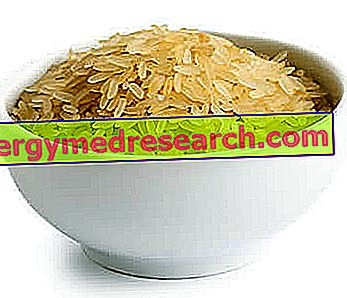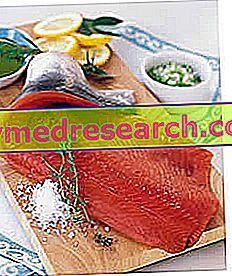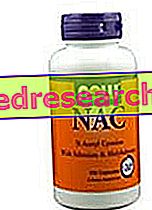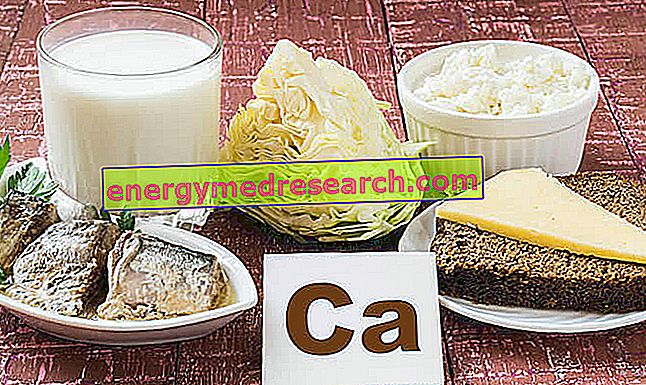What is converted rice?
The converted (converted) rice is " naturally enriched ", thanks to an industrial processing technique.

Note : "naturally enriched" means that, unlike other products - to which minerals and vitamins are artificially added - the converted one exploits the nutritive elements normally present in other parts of the caryopsis that would be excluded with the shine.
processing
What is the parboiling of converted rice?
The parboiling system gives rice specific chemical and physical properties.
We briefly summarize the phases of the method:
- Soaking in hot water of whole grains (NOT brown)
- Steaming
- Drying and drying
- Removal of external fibrous layers (may change depending on the type of rice to be obtained, refined or partially integral).
Note : the first parboiling system was born about a century ago and since then numerous modifications have been applied to it, such as, for example, the use of vacuum, the change in temperatures and cooking time, etc.
Features
Chemical and physical properties of converted rice
The properties of converted rice could be divided as follows:
- Chemical characteristics, which mainly concern:
- Greater concentration of vitamins (especially water-soluble B group) and mineral salts, which penetrate from the outer layers inside (from the pericarp to the endocarp).
- Change in the structure of the starch, with an increase in non-digestible carbohydrates ( resistant starch ) with a prebiotic function and able to reduce the glycemic index of the food.
- Physical characteristics: as a consequence of the structural alteration of starch, converted rice reacts differently to cooking, reducing the output of carbohydrates and better resisting heat treatment.
Appearance of converted rice
We have already said that, as a result of the converted process, the starch of the beans is significantly modified.
In addition to affecting the properties of rice, this change alters its appearance. At sight, the seeds are no longer white and opaque, but yellowish and translucent.
Benefits and Defects
Benefits of converted rice
Unlike the polishing, which makes the rice less nutritious, the converted process considerably improves the chemical profile of the cereal.
Then, in addition to the nutritional advantage, the converted rice has other advantages such as:
- Greater ease of processing (in the removal of fibrous coatings)
- Greater physical resistance (grains are more elastic and less fragile)
- Greater shelf life
- Greater cooking speed, resistance to flaking and starch retention. The converted rice is more suitable for boiling and cooling, used to produce rice salads.
Rice defects converted
The advantages of converted rice can also represent real defects. In particular, we are talking about the features:
- Greater retention of starch during cooking
- Greater resistance to flaking.
If for some recipes (such as rice salads) these characteristics are desirable, for risottos they constitute a real defect. For these recipes a release of starch in cooking is in fact essential; without this process the grains of the risotto are washed out, as if they were in broth, or too dry. Moreover, the strong resistance to flaking gives the converted rice a cartilaginous and tenacious consistency, completely unsuited to the characteristics of a good risotto, which must instead be characterized by the right softness.
Nutrition
Nutritional characteristics of converted rice
Rice is a product that belongs to the III fundamental group of foods.
It is an excellent source of complex carbohydrates (highly energetic molecules), but also contains dietary fiber, minerals and certain vitamins.
Proteins are quantitatively less relevant than carbohydrates and, lacking amino acid lysine, have an average biological value. Fatty acids are even more scarce, while cholesterol is absent.
It does not contain gluten and is the main wheat substitute in case of celiac disease. It is also lactose free.
It is used very frequently by vegans, which compensate for the biological value of proteins by associating and / or alternating with legumes. This avoids the risk of deficiency in essential amino acids in the diet.
It is advisable to be careful not to exceed the total amount of rice in case of obesity, type 2 diabetes mellitus and hypertriglyceridemia.
The average portion corresponds to about 80 g of dry cereal, but the frequency of consumption also depends on the general composition of the diet.
Differences between polished and converted rice
As far as vitamins and minerals are concerned, compared to polished rice, the converted one is richer in:
- B vitamins, especially thiamine (vit B1).
- Minerals, in particular: potassium, iron, calcium, phosphorus, zinc, copper and selenium.
The converted rice starch is partially non-digestible and contributes to the prebiotic function which, in the polished, is normally performed only by the fibers. Furthermore, the starch of parboiled rice gives the food a lower glycemic index, stimulating less insulin production. This characteristic, which has a real value only when the portions are adequate, can be useful in nutritional therapy against overweight, type 2 diabetes and hypertriglyceridemia.
| Chemical composition | Value for 100g | ||
Shiny Rice | Parboiled Rice | ||
Edible part | 100% | 100% | |
water | 12, 0g | 10, 3g | |
Protein | 6, 7g | 7, 4g | |
Limiting Amino Acid | Lysine | Lysine | |
Total lipids | 0.4g | 0.3g | |
Saturated fatty acids | 0, 10g | - | |
Monounsaturated fatty acids | 0, 13g | - | |
Polyunsaturated fatty acids | 0, 18g | - | |
Cholesterol | 0, 0mg | 0, 0mg | |
Carbohydrates available | 80, 4g | 81, 3g | |
Starch | 72, 9g | 73, 6g | |
Soluble sugars | 0.2g | 0.3g | |
Total fiber | 1.0g | 0.5g | |
Soluble fiber | 0, 08g | - | |
Insoluble fiber | 0, 89g | - | |
Phytic acid | - | - | |
Alcohol | 0.0g | 0.0g | |
Power | 332, 0kcal | 337, 0kcal | |
Sodium | 5, 0mg | 9, 0mg | |
Potassium | 92, 0mg | 150, 0mg | |
Iron | 0, 8mg | 2, 9mg | |
Football | 24, 0mg | 60, 0mg | |
Phosphorus | 94, 0mg | 200, 0mg | |
Magnesium | 20, 0mg | - | |
Zinc | 1, 3mg | 2, 0mg | |
Copper | 0, 18mg | 0, 34mg | |
Selenium | 10, 0μg | 14, 0μg | |
Thiamine | 0, 11mg | 0, 34mg | |
Riboflavin | 0, 03mg | - | |
Niacin | 1, 3mg | - | |
Vitamin A retinol eq. | 0, 0μg | 0, 0μg | |
C vitamin | 0, 0mg | 0, 0mg | |
Vitamin E | tr | tr | |
Rso Converted Integrale
Does integral rice exist?
Fast cooking brown rice has already been available for some years. It is a converted rice to which a part of the fibrous coatings is left during the hulling. It cooks approximately in 10 ', contrary to the traditional integral which requires at least 40-50' at 100 ° C (in a pressure cooker, at 110 ° C, about half) and is an excellent solution for those with little time to devote to the kitchen.
Compared to traditional brown rice, the converted one has no noteworthy contraindications and it is absolutely advisable in the diets that require:
- Less caloric intake than normal
- Less carbohydrate intake
- Less glycemic and insulin index
- Greater amount of dietary fiber
- Greater amount of vitamins and minerals.



